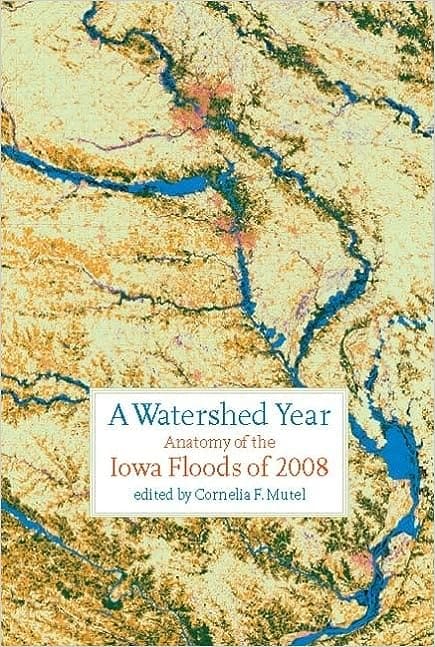A Watershed Year: Anatomy of the Iowa Floods of 2008
Featured Book: The Watershed Year: Anatomy of the Iowa Floods of 2008
Before delving into our post, consider checking out this insightful book. It provides an in-depth exploration of watershed management and the impacts of extreme weather events, offering valuable context to our discussion on “Watershed 2023.”
I. Introduction: Setting the Stage for Watershed 2023
Watersheds, the cradle of our water resources, are integral to sustaining life on Earth. These geographic powerhouses play a crucial role in our planet’s hydrological cycle, supporting diverse ecosystems, and supplying water for human consumption, agriculture, and industry. This brings us to the focus of our discussion, “Watershed 2023” – a year marked by significant hydrological changes that reshaped the landscape of water management.
II. The State of Watersheds in 2023
In 2023, watersheds worldwide have encountered unprecedented challenges, primarily driven by climate change, population growth, and industrialization. However, this year also brought forth remarkable advancements in our understanding and management of these vital systems, leading to significant hydrological changes.
III. Key Hydrological Changes in 2023
The year 2023 marked a turning point for hydrological transitions. A notable shift was the increased frequency of extreme weather events, leading to increased runoff and soil erosion in many watersheds. Simultaneously, we saw an enhancement in technologies for predicting and managing these events, leading to improved flood control and water quality.
IV. The Benefits of These Changes
The benefits of these hydrological changes are twofold. First, improved forecasting and management of extreme events have led to better flood control, helping to protect both human lives and property. Second, advancements in water quality monitoring have led to improved public health outcomes and the preservation of aquatic ecosystems.
V. The Challenges of Watershed Management in 2023
Despite these advancements, watershed governance issues persist. The increasing unpredictability of weather patterns, coupled with growing populations and urban development, have placed immense pressure on our watersheds. These challenges require innovative solutions and strong policy measures to ensure the sustainability of our water resources.
VI. Taking Action: Strategies and Solutions for Watershed Management
In response to the challenges of 2023, several key strategies have emerged. These include the adoption of green infrastructure, the application of AI and machine learning for predictive modeling, and the strengthening of community engagement in watershed management. These strategies not only address the current challenges but also pave the way for sustainable water management in the future.
VII. Recommended Resources
For those interested in deepening their understanding of watersheds and their management, a recommended read is “Water Technology Trends 2023” a comprehensive guide that provides insights into the latest technology trends and strategies in watershed management.
VIII. Conclusion: Looking Ahead Beyond Watershed 2023
“Watershed 2023” marked a significant step in our ongoing journey to understand and manage the vital water resources our planet provides. The hydrological changes and advancements we’ve seen this year underscore the importance of continuous innovation and commitment to sustainable watershed management.
IX. Call to Action
We encourage you to learn more about your local watersheds and the role you can play in their conservation. Share this post with others and help spread the word about “Watershed 2023” and the significant hydrological changes that are shaping our world. Remember, every drop counts, and so does every action we take to preserve it.
X. Other Articles
We greatly appreciate your time and interest in exploring ‘Watershed 2023: A Year For Significant Hydrological Change’. Sharing this knowledge with others is a powerful way to spread awareness, so feel free to pass along this resource to your friends, family, or colleagues who might find it insightful.
In addition, we invite you to delve deeper into our other articles that offer a wealth of knowledge on related topics. Check out:
- Conservation Initiatives in Alberta’s Public Land Use Zones (PLUZs): Discover how Alberta is preserving its natural landscapes and ecosystems.
- Understanding Floods: A Hydrometeorological Perspective: Learn about the intricate processes behind flooding from a hydrometeorological viewpoint.
- Top 10 Best Hiking Trails Around the World: Venture into the world’s most stunning hiking trails and get inspired for your next adventure.
- The Effects of Climate Change on Weather Patterns: Understand how our changing climate is altering global weather patterns.
- The Importance of Temperature in Our Changing Climate: Uncover the critical role temperature plays in our rapidly changing climate.
Thank you for your commitment to learning, sharing, and acting on these vital environmental topics. Together, we can make a difference!

